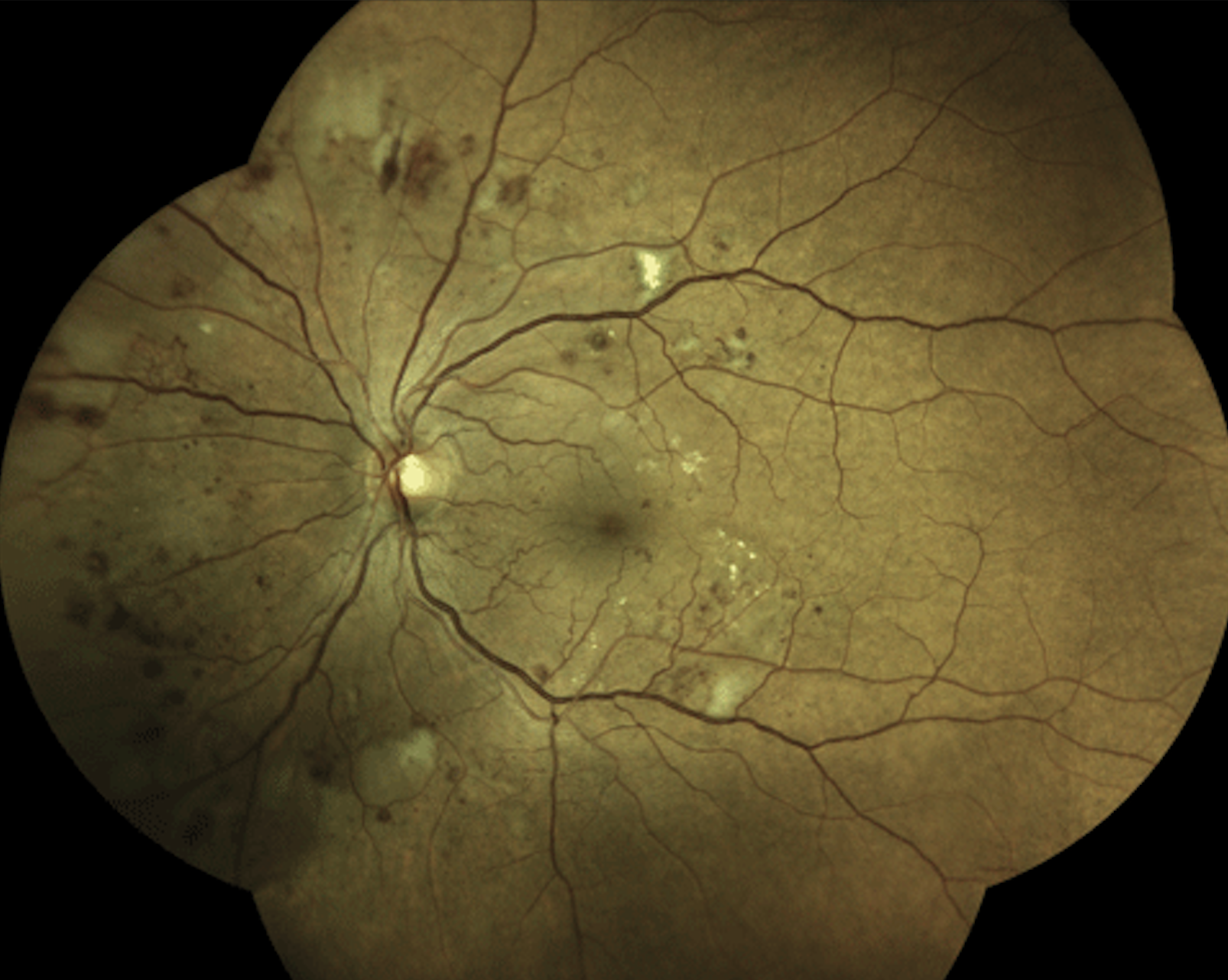 |
|
A new study emphasizes the importance of controlling hypertension early in diabetes, even before the onset of diabetic retinopathy. Photo: Steven Ferrucci, OD, and Brenda Yeh, OD. Click image to enlarge. |
Researchers recently investigated the relative impact of hypertension vs. diabetes on the wall-to-lumen ratio (WLR) of retinal arterioles in diabetic retinopathy (DR). Their prospective cross-sectional study aimed to address the unresolved question of whether there is a difference in WLR between healthy subjects and those with diabetes mellitus before the onset of clinical retinopathy (DR) and if so, whether the increase in WLR is mainly driven by diabetes or hypertension.
The study compared the retinal arteriolar WLR in 17 healthy eyes, 15 with diabetes but no apparent DR and eight with diabetic macular edema (DME) and either nonproliferative or proliferative DR. Adaptive optics scanning laser ophthalmoscopy (AOSLO) and multiple linear regression were used to quantify the WLR and determine the effects of age, hypertension and diabetes.
The results showed that both subjects with diabetes but no apparent DR and subjects with DME had significantly higher WLR in retinal arterioles compared to healthy subjects. The mean WLR for healthy subjects was 0.29, while for subjects with diabetes and no DR it was 0.36, and for subjects with DME it was 0.42.
When analyzing the correlation between WLR and hypertension, diabetes and age, it was found that in healthy subjects and subjects with diabetes and no DR, hypertension had the strongest effect on WLR. The analysis also showed that hypertension and WLR shared a significant positive correlation, though age and diabetes were not significantly correlated with WLR in these groups.
In the analysis that included all three groups (healthy, diabetes no DR, and DME), diabetes had the strongest effect on WLR, and the two variables were positively correlated. Age and hypertension were not significantly correlated with WLR in this analysis.
While the small sample in this study limits its effect size, its results support the hypothesis that hypertension may be an early driver of retinal arteriolar wall thickening in preclinical DR, independent of age or diabetes. On the other hand, changes specific to DR may drive wall thickening in DME and later stages of DR.
“Our study sheds light on, and begins to address, an important gap in our knowledge regarding the relative contribution of hypertension (early) and diabetes (later) in the course of DR,” the researchers wrote in their study. “Understanding the pathogenesis of preclinical DR is important for the development of treatments to prevent DR onset and progression.” Additionally, “These findings highlight the importance of optimizing blood pressure control in individuals with diabetes mellitus even prior to the onset of DR,” they noted.
Huang BB, Fawzi AA. Hypertension likely drives arteriolar wall thickening in preclinical diabetic retinopathy while diabetes drives wall thickness in clinical retinopathy. Transl Vis Sci Technol. 2024;13(6):8. |


